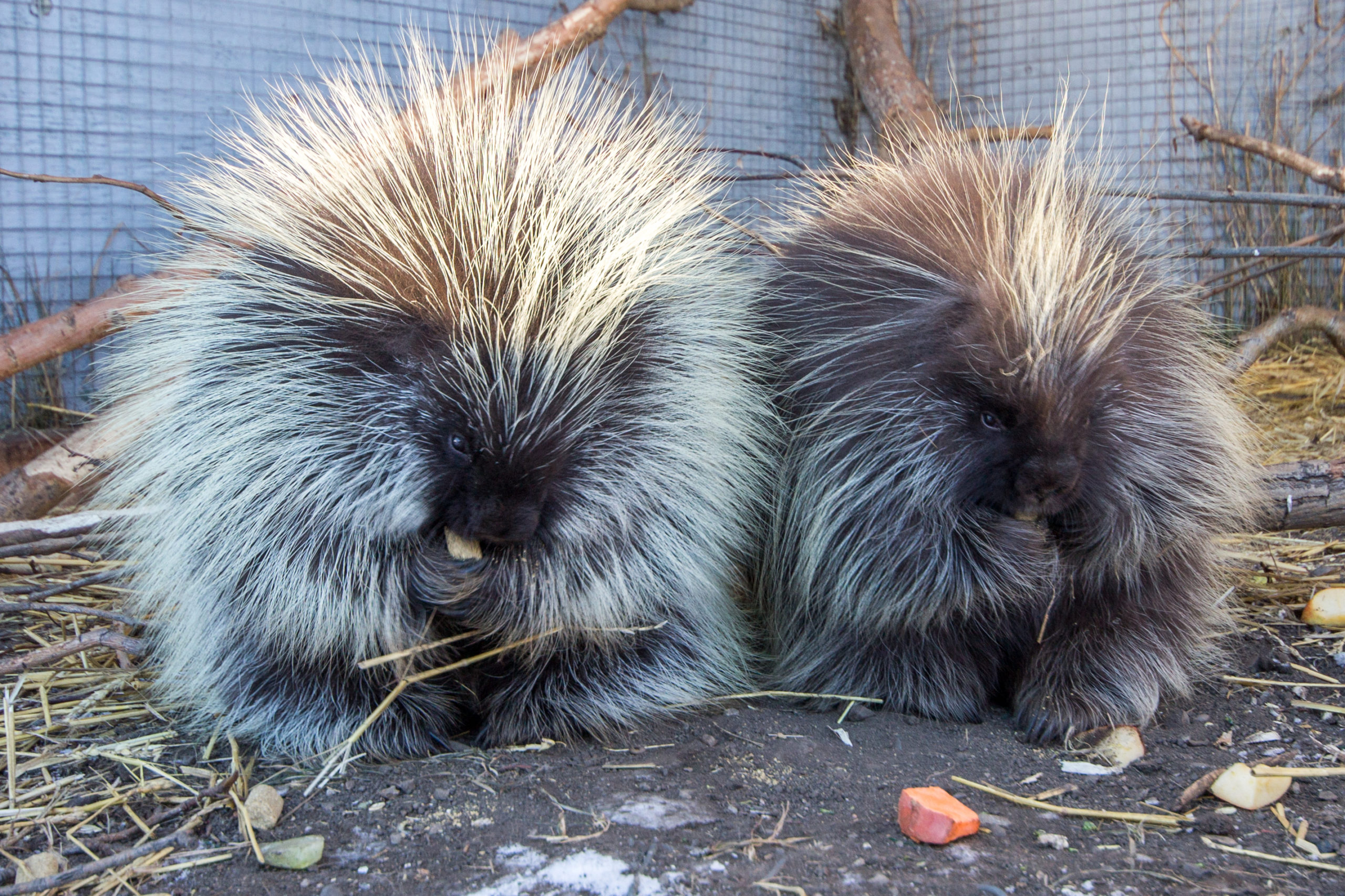It’s unlikely that you’ve seen one of these spiky critters bumbling around, since porcupines are nocturnal and tend to avoid humans at all costs.
If you were to run into a porcupine though, you might find them in treed areas, chewing on soft bark or even munching on crops in fields.
Porcupines like to live in caves, hollowed out logs, treetops and even abandoned buildings.
These large rodents are strictly vegetarians (herbivores) and enjoy a diet of bark, berries, leaves and plants. They are tree-climbing experts, although they move slowly and awkwardly when they make up their way up the tree line. When they do get up a tree, they sometimes stay up there for days to rest.
Porcupines do most of their breeding in late summer or early fall, giving birth to a single baby, called a “porcupette” in May or June. Porcupettes are quite large when they’re born, but their quills are soft to avoid hurting their mother during their birth.
Porcupettes mature rather slowly and a porcupine’s life span is usually five to six years. In some cases they have been known to live up to ten years.
One common misconception about porcupines is that they can “throw or shoot” their quills. The truth is, porcupines can only “quill” you if you’re touching them, and there’s usually a few warning signs that come first. A porcupine who is clattering their teeth, vocalising or “displaying” her quills to you, is letting you know not to come any closer.
Despite their tough exterior, porcupines are low-key, calm, quiet creatures who tend to keep to themselves. They are one of the many unique mammals that call Alberta home and make their way into AIWC when injured or in need of help.
The holidays are a great time to help out Alberta’s wildlife! Consider adopting an animal for a loved one through AIWC’s Adopt an Animal program. Program participants receive a colour photo of their adopted animal and an adoption certificate. Give a gift that makes a difference.
By Nina Grossman, AIWC Volunteer
Sources:
https://aep.alberta.ca/fish-wildlife/human-wildlife-conflict/porcupines.aspx
https://albertatravel.org/Porcupines_Alberta.htm







1 thought on “Porcupine Pals”
Pingback: Porcupine - Share Top Five